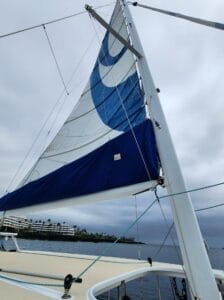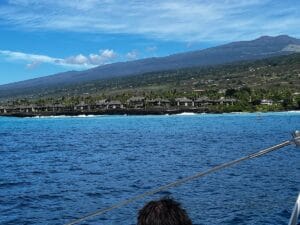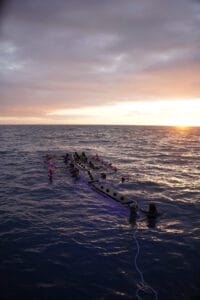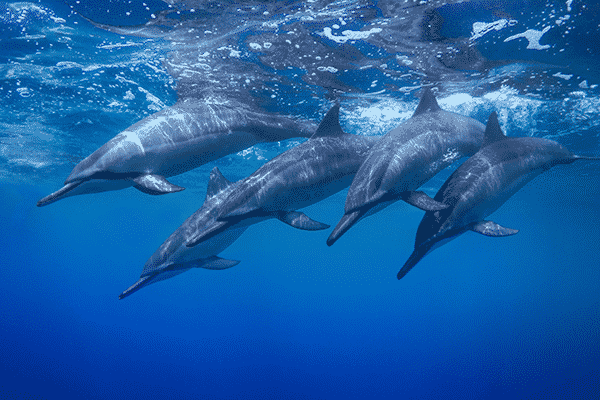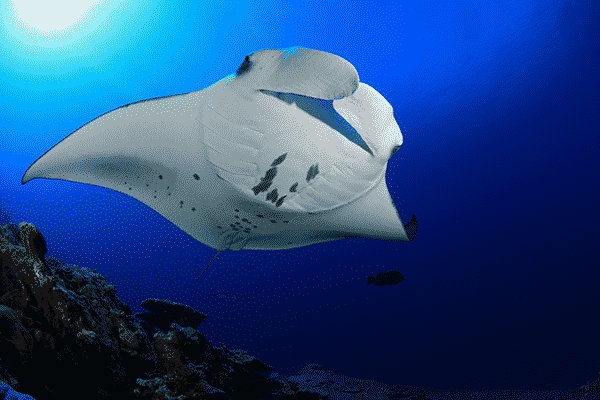Martina Wing for Manta Ray Advocates on techniques that Manta Rays use to feed. Join us on the beautiful Hoku Nui to sail out to Manta Ray Village for an amazing experience joining these majestic and gentle creatures as they feed and perform a graceful hula beneath the surface.
Manta rays are large animals who need to a lot of food to sustain themselves – however, they’re also completely harmless giant fish who only eat tiny things: small and microscopic plankton.
Marine predators developed elaborate hunting techniques to find, kill and eat their prey. And while manta rays are not predators, their anatomy is also completely adapted to process over two million pieces of plankton per day by filter-feeding. Check out this page to learn more about what and how much they actually eat!
Let’s dive deeper into the unique techniques manta rays use to sustain themselves…
HOW MANTA RAYS EAT: “RICOCHET” FILTER-FEEDING
Manta rays can’t stop swimming, they need to keep moving forward at all times in order for their gills to be oxygenated so they can stay alive.
They are filter-feeders: that means when they find abundant plankton (for example in ocean current lines), they swim through it with an open mouth and everything on their paths gets filtered through the large oral cavity. There is no sucking in, but rather swimming through the food while they filter it.
This article from the Smithsonian website tells us the first filter-feeder was a giant shrimp who raked plankton from the bottom of the sea – these days, famous filter-feeding marine animals include whale sharks and humpback whales.
Manta rays swim slowly with their mouths open to eat. While they do that, their cephalic fins (which look a bit like horns) unroll to help funnel the plankton into their oral cavity and over their gill rakers. Those rake the plankton to the back of the mouth to the esophagus.
This unique mechanism separates solids from fluids, which causes larger particles to “ricochet” away from the filter pores – and allows them to easily separate smaller from larger particles. The water then flows over the gills and exits through the gill slits at the front of their body (ventral side).
EXCRETION: WHAT HAPPENS WITH THE FOOD THAT’S FILTERED OUT
Since manta rays are constantly moving forward, sometimes absorbing everything in their path, that means that there’s a whole lot of stuff coming into their mouths that the mantas won’t be eating…
Some of it comes out after going through their digestive tract, while some of the food gets trapped in their gills – which they then need to cough (or vomit) up the food that got stuck.
8 ELABORATE SWIMMING STRATEGIES MANTAS USE FOR CAPTURING FOOD
Manta rays developed a whole series of strategies to help them catch as much plankton as possible in one fell swoop.
Sometimes it’s the specific positions or movements they make as they’re swimming, sometimes they band together as a group; the strategies are often pretty complex.
So far, eight different strategies for filter-feeding have been identified:
- Straight feeding (solo): the manta swims horizontally forward for a while – and then makes a sharp turn to swim back along the same line, feeding in the opposite direction.
- Surface feeding (solo): the manta ray keeps its upper jaw just above the surface of the water – and at the end of a feeding “run”, they dip away from the surface to make a turn
- Chain feeding (up to 12 mantas): a group of mantas line up head-to-tail, with every ray positioning itself slightly above or below the manta in front of them. The rest of the process looks much like “straight feeding”, just with a lot more mantas.
- Piggyback feeding (2 or more reef mantas): a smaller (male) manta positions itself on the back of a larger (female) manta ray. At the end of a feeding run, the “bottom” manta turns to swim in the opposite direction – and the piggybacker is displaced.
- Somersault feeding (solo): the manta ray twirls around its own axis, completing a 360-degree supertight loop in the water column. We’ve got an article dedicated to this technique specifically (and how it has been used in engineering and aviation design)!
- Cyclone feeding (up to 150 mantas): a line of chain-feeding mantas loop around until the lead joins the tail of the line… and they form a circle of about 15 meters in diameter. As more mantas join in, they look like an underwater counterclockwise cyclone. Check out this page with cool video footage of a manta ray cyclone!
- Sideways feeding (solo, or in a chain): instead of swimming horizontally like with straight feeding, the manta swims sideways.
- Bottom feeding (solo): the manta ray swims along the seabed with its gaping mouth about a centimeter above the bottom of the sea.
Source: the Manta Trust website


